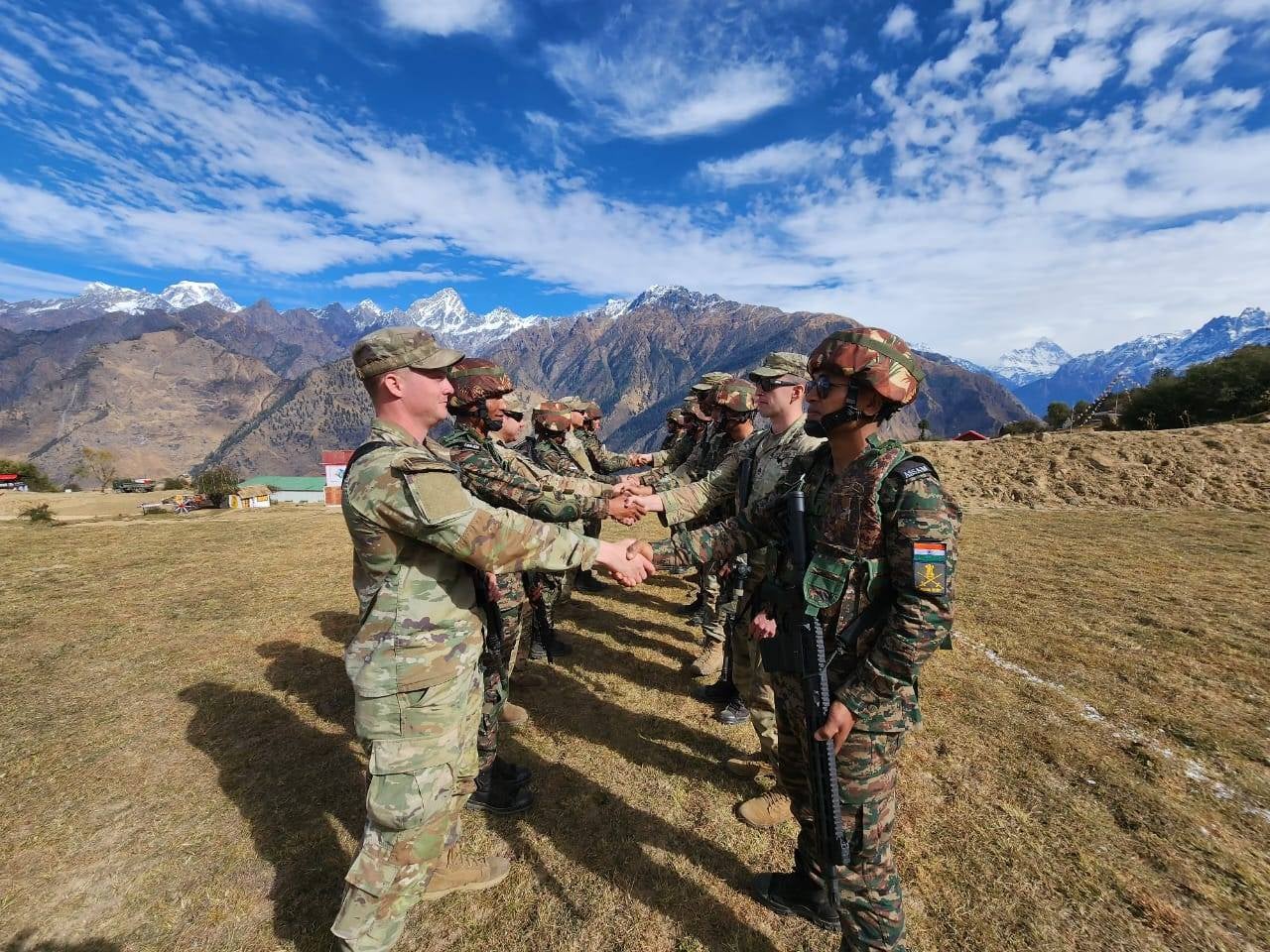India shows off drone-busting birds in joint drills with US near Chinese border
Expert says wargames send a message to China, which has warned America against ‘third party meddling’ in its border issues with India

India’s military showed off trained kites swooping down through mountain ranges to take out drones as part of ongoing high-altitude drills with the US military less than 100km away from the border with China, drawing strong objections from Beijing.
The two militaries kicked off the 18th edition of the US-Indian joint exercises known as “Yudh Abhyas” (war practice) in Auli, in India’s northern Uttarakhand state, earlier this month.
The drills, which began on 16 November and are spanning 15 days, are taking place on Nanda Devi, the second highest mountain range in India. They are focused on sharing technology and know-how specifically for high-altitude skirmishes and warfare in extremely cold weather.
The soldiers of the two armies dropped from helicopters to flush out simulated gunmen from a remote house, demonstrating combat skills with different weapons systems and mountain warfare skills like rappelling and ziplining across or down cliffs.
A video from the drills purported to show a trained kite named Arjun soaring skywards on command, taking down a quadcopter drone and flying off to carry out another surveillance mission.
“Indian Army troops are using trained kites to prey on enemy drones in a first of its kind usage of these birds. [The] Indian Army is using trained kites along with dogs for military operations,” army officials said, according to the ANI agency.
US soldiers from the First Squadron, 40th Cavalry Regiment, Second Brigade, 11th Airborne Division are participating with Indian counterparts from the Assam Regiment, the Indian defence ministry said.
The US squadron, based out of Alaska’s Joint Base Elmendorf-Richardson, trains in cold and rough mountainous terrain, hiking the Denali mountain range.
“The Denali paratroopers, joining the [Indian Army’s Ninth Assam Regiment], are aptly named for their focus on reconnaissance and mountaineering across the Arctic and Alaska’s formidable terrain – although the Himalayas will certainly be a new test,” Colonel Jody Shouse, head of the second Brigade, 11th Airborne Division, said in the opening ceremony.
“Yudh Abhyas reinforces our commitment to the Indo-Pacific region and improves interoperability with our Indian Army partners,” the US Army Pacific official said.
While previous editions of the drills have also taken place in Uttarakhand, this is the first time the exercise is being held in such close proximity to India’s border with China.
The exercise also comes at a time when India and China remain in a state of heightened military engagement along sections of their shared Himalayan border, since tensions there flared into deadly clashes in 2020.
The two partners in the drills have avoided directly mentioning China, but experts say operations have clearly been designed to counter Chinese capabilities.
Expressing objection over the presence of the rival armies in exercises near the border, the Chinese foreign ministry said: “We firmly oppose any third party to meddle in the China-India border issue in any form.”
Delhi has assured Beijing that the drills are “something completely different” and should not be viewed as “third party interference”.
Former Indian army veteran and defence expert Lt Col (retired) JS Sodhi tells The Independent that the exercises are important as it sends a “clear and crisp message to China” in the face of its border aggression.
“Secondly, it will also hone up the skills of the Indian army from a defence perspective because the more nation’s army practices or has drills with the armies of other countries, [the more] they exchange critical knowledge and tactics,” he said.
“It is a win-win situation for both sides as there is a lot to learn when the Indian Army trains with armies of developed countries like the US or UK that have taken part in military operations around the world, while the Indian Army is a global master in mountain warfare or desert warfare.”
The bilateral exercise has been an annual affair since 2004 and locations have alternated between the US and India. Last year, it was held in Alaska.
Subscribe to Independent Premium to bookmark this article
Want to bookmark your favourite articles and stories to read or reference later? Start your Independent Premium subscription today.

Join our commenting forum
Join thought-provoking conversations, follow other Independent readers and see their replies